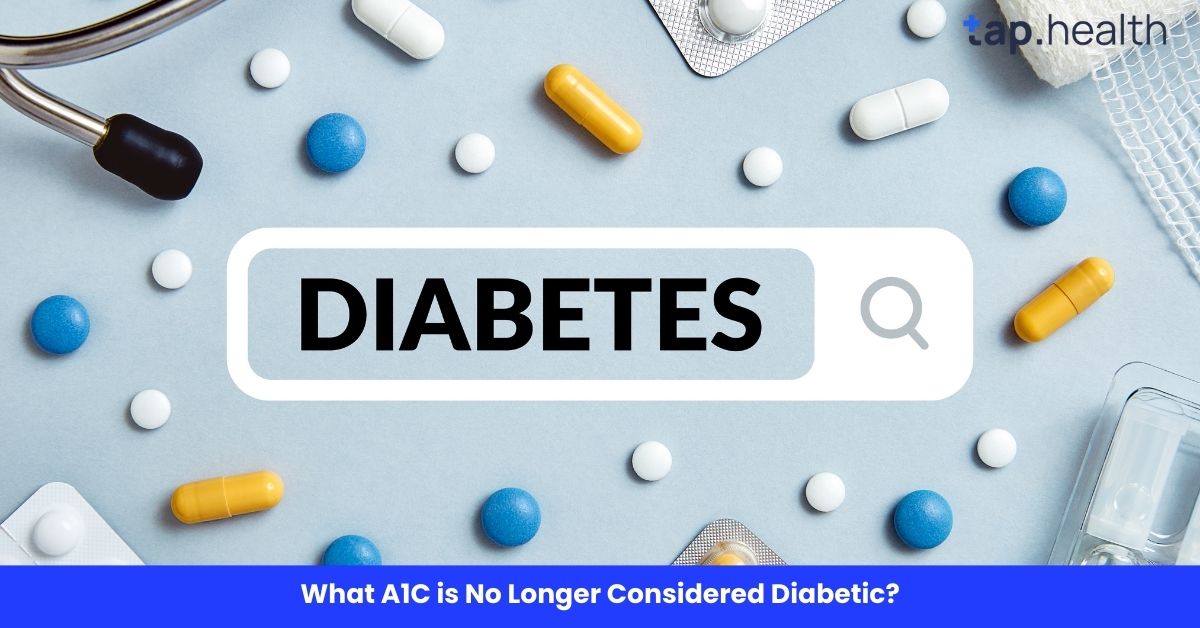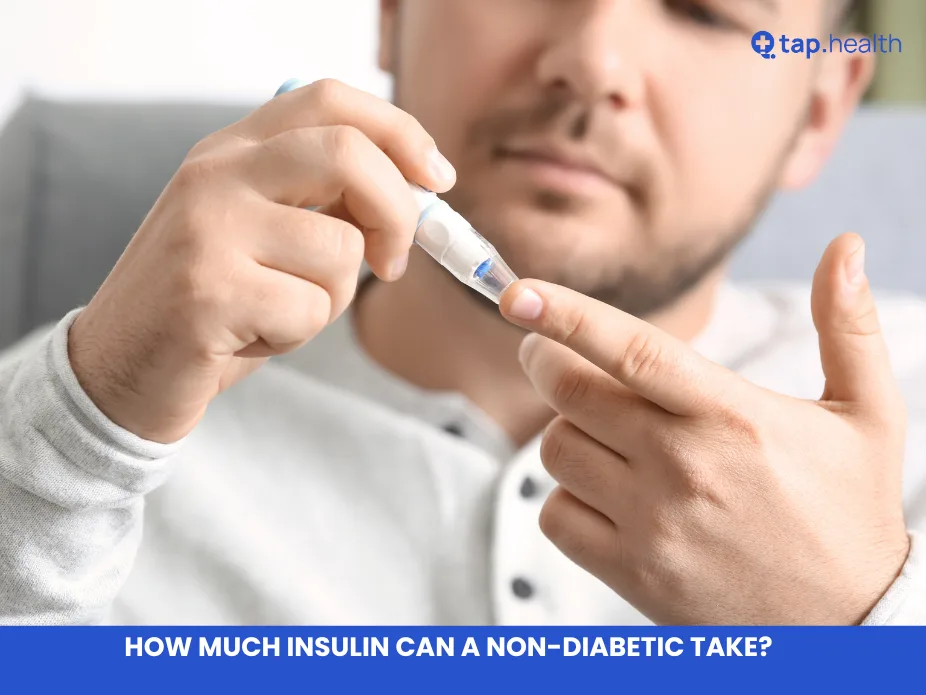Understanding your A1C level is an essential part of managing your health, especially when it comes to diagnosing and monitoring diabetes. A1C, also known as hemoglobin A1c or HbA1c, is a blood test that measures your average blood sugar (glucose) levels over the past 2 to 3 months. It’s used by healthcare professionals to diagnose and monitor diabetes.
But what A1C level is considered “no longer diabetic”? And what does it mean if your A1C level is above or below certain thresholds? In this article, we’ll explore what A1C is, how it relates to diabetes, the different ranges for normal and diabetic A1C levels, and when you should be concerned.
What Is A1C?
Before we dive into the specifics of A1C and diabetes, let’s take a moment to understand exactly what A1C is and why it’s important.
The Basics of A1C
A1C refers to a blood test that measures the percentage of hemoglobin, a protein in red blood cells, that has glucose attached to it. Hemoglobin carries oxygen throughout your body, and when your blood sugar levels are high, more glucose attaches to hemoglobin. The higher your A1C level, the higher your average blood sugar levels have been over the past few months.
The A1C test is important because it reflects your long-term blood sugar control, which is essential for diagnosing diabetes and prediabetes. Unlike daily blood sugar tests, which give a snapshot of your blood sugar levels at a specific moment, A1C provides a broader picture of how well your body has been managing blood sugar over time.
What Are Normal A1C Levels?
To understand what A1C level is “no longer considered diabetic,” we first need to know the different A1C levels and what they mean.
A1C Ranges:
- Normal A1C: An A1C level of less than 5.7% is considered normal. This means your blood sugar levels are within a healthy range, and you are not at risk of developing diabetes.
- Prediabetes: An A1C level between 5.7% and 6.4% indicates prediabetes. This is a warning sign that your blood sugar is higher than normal but not high enough to be classified as diabetes. Without lifestyle changes, prediabetes can progress to Type 2 diabetes.
- Diabetes: An A1C level of 6.5% or higher on two separate tests is considered diagnostic for diabetes. This indicates that your blood sugar levels are consistently too high, and you have diabetes.
What A1C is No Longer Considered Diabetic?
When it comes to the question of “What A1C is no longer considered diabetic?” the answer lies in the transition between prediabetes and diabetes. For people with an A1C level of 6.4% or lower, you are not considered diabetic. However, an A1C level of 6.5% or higher is the threshold used for diagnosing diabetes.
It’s essential to note that A1C levels are just one part of the puzzle. A diagnosis of diabetes may also include other factors, such as symptoms and results from additional tests (like fasting blood sugar or an oral glucose tolerance test).
How Is A1C Used to Diagnose Diabetes?
A1C plays a crucial role in diagnosing both Type 1 and Type 2 diabetes, as well as prediabetes. Here’s how it works:
1. Initial Diagnosis
If you have symptoms of diabetes (such as increased thirst, frequent urination, fatigue, or blurred vision), your doctor may order an A1C test. If your A1C is 6.5% or higher, this is a strong indication that you have diabetes.
2. Monitoring Progress
For people already diagnosed with diabetes, the A1C test is used to monitor how well blood sugar levels are being controlled over time. A goal of keeping A1C under 7% is common for many adults with diabetes, though the target may vary depending on individual factors.
3. Tracking Changes in Risk
For individuals at risk for developing diabetes, the A1C test helps track whether they are moving from normal levels to prediabetes and possibly to full diabetes. Regular testing can help doctors make early interventions to prevent progression.
What A1C Level Means for Your Health
Your A1C level is not just a number—it’s an important indicator of how well you’re managing your blood sugar and your overall risk for complications. Here’s what different A1C levels mean for your health:
1. Normal A1C (Below 5.7%)
If your A1C is below 5.7%, you are at a low risk of developing diabetes and your blood sugar levels are well-managed. Maintaining this healthy range through a balanced diet, regular exercise, and stress management is essential.
2. Prediabetes (5.7% – 6.4%)
An A1C in this range means your blood sugar levels are higher than normal but not high enough to be classified as diabetes. If you have prediabetes, you are at higher risk of developing Type 2 diabetes, heart disease, and stroke. Lifestyle changes like improving your diet, increasing physical activity, and losing weight can help lower your A1C and prevent the progression to diabetes.
3. Diabetes (6.5% or Higher)
If your A1C is 6.5% or higher, you may have diabetes. People with diabetes face an increased risk of complications like heart disease, kidney problems, nerve damage, and vision issues. Managing your blood sugar through insulin therapy (for Type 1 diabetes) or oral medications (for Type 2 diabetes), along with a healthy lifestyle, can help reduce these risks.
Can You Reverse Prediabetes?
While prediabetes doesn’t automatically mean you will develop Type 2 diabetes, it does indicate that your body is not processing glucose properly. However, prediabetes is reversible through lifestyle changes. Some effective ways to lower your A1C and prevent Type 2 diabetes include:
1. Eating a Healthy Diet
Focus on a diet rich in whole foods, such as vegetables, fruits, lean proteins, and whole grains. Avoid processed foods, sugary snacks, and drinks, as these can spike your blood sugar levels.
2. Increasing Physical Activity
Exercise helps your body use insulin more efficiently and lowers your blood sugar levels. Aim for at least 30 minutes of moderate exercise most days of the week.
3. Maintaining a Healthy Weight
Losing excess weight, especially abdominal fat, can significantly reduce your risk of developing Type 2 diabetes. Even a modest weight loss (5-10% of your body weight) can have a big impact on your A1C.
4. Managing Stress
Chronic stress can affect blood sugar levels. Stress-reducing activities such as meditation, yoga, or simply taking time to relax can help manage your A1C.
What A1C Level is Considered Controlled for Diabetes?
For people with diabetes, the goal is to keep the A1C level as close to normal as possible. The American Diabetes Association (ADA) recommends an A1C target of less than 7% for most adults with diabetes. However, targets may vary based on individual factors, such as age, how long someone has had diabetes, and other health conditions.
Managing A1C in Diabetes
To keep your A1C under control, you should focus on:
- Insulin therapy (for Type 1 or Type 2 diabetes if needed)
- Oral medications (for Type 2 diabetes)
- Dietary changes
- Regular physical activity
- Routine blood sugar monitoring
What Happens If Your A1C Is Too High?
If your A1C remains too high for an extended period, you may experience serious complications, including:
1. Cardiovascular Disease
High blood sugar can damage your blood vessels, increasing the risk of heart disease, stroke, and high blood pressure.
2. Nerve Damage
Excessive blood sugar can harm your nerves, leading to conditions like neuropathy, which can cause pain, tingling, and loss of sensation, particularly in the hands and feet.
3. Kidney Damage
Chronic high blood sugar can lead to kidney disease and, in severe cases, kidney failure.
4. Vision Problems
High blood sugar can damage the blood vessels in the eyes, leading to diabetic retinopathy, cataracts, and even blindness.
Real-Life Scenario
Imagine someone who was diagnosed with type 2 diabetes with an A1C of 7.2%. After adopting a healthy diet, exercising regularly, and following medical advice, their A1C drops to 5.9%. This means they are no longer in the diabetic range but fall into the prediabetes category. If they continue their lifestyle changes and bring it below 5.7%, it would be considered normal.
Expert Contribution
Endocrinologists explain that while lowering A1C is a good sign, a person with a history of diabetes should still be cautious. Even if the A1C goes below the diabetic range, the risk of diabetes returning remains unless healthy habits are maintained. Doctors often use the term “diabetes in remission” rather than “cured.”
Recommendations Grounded in Proven Research and Facts
- Aim for an A1C below 5.7% to be in the normal range.
- Maintain lifestyle changes such as a balanced diet, regular exercise, and weight management.
- Monitor A1C regularly (every 3–6 months) as recommended by your doctor.
- Don’t stop medications without guidance—some people may need long-term treatment to keep A1C under control.
- Focus on long-term habits rather than short-term fixes, as diabetes is a chronic condition.
FAQ on What A1C is No Longer Considered Diabetic?
1. What A1C level is considered no longer diabetic?
An A1C level of 6.4% or lower is considered prediabetic or normal, meaning you’re not yet diabetic. An A1C of 6.5% or higher is diagnosed as diabetes.
2. Can I reverse my prediabetes A1C level?
Yes, with lifestyle changes such as eating a healthy diet, exercising regularly, and losing weight, you can lower your A1C and reduce the risk of progressing to Type 2 diabetes.
3. What should my A1C be for good diabetes management?
Most people with diabetes should aim for an A1C of less than 7%. However, your healthcare provider will help determine the right target for you.
4. Is an A1C of 6.5% a high risk for complications?
An A1C of 6.5% or higher indicates diabetes and increases the risk of complications, but managing your blood sugar effectively through medication and lifestyle changes can help reduce this risk.
5. How often should I get my A1C tested?
If you’re at risk for diabetes or have been diagnosed, you should have your A1C tested at least twice a year. If you’re managing diabetes, your healthcare provider may recommend testing every three months.
Conclusion
Your A1C level is a critical indicator of how well your body is managing blood sugar and your risk for diabetes-related complications. Knowing what A1C level is no longer considered diabetic and how to manage your blood sugar can help you maintain good health. Whether you are in the prediabetic range or have been diagnosed with diabetes, taking proactive steps to control your A1C can significantly improve your overall health and quality of life. Always work with your healthcare provider to determine the best approach to managing your blood sugar levels.



